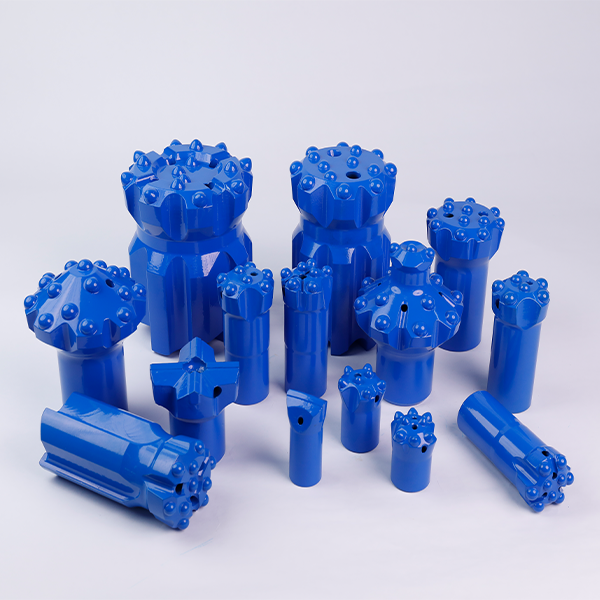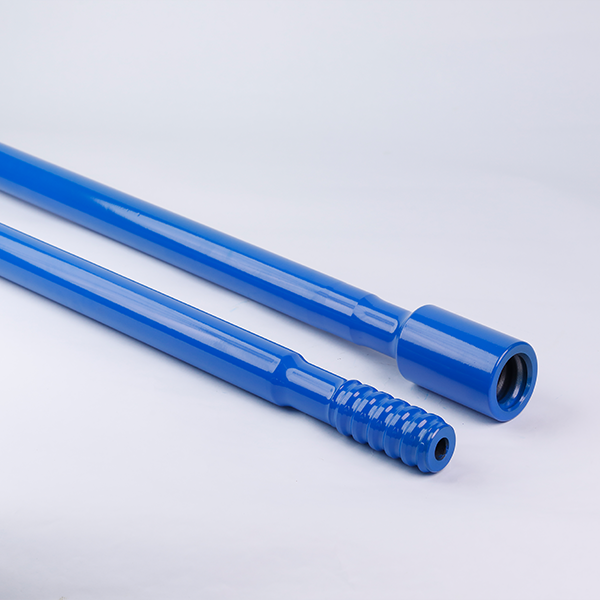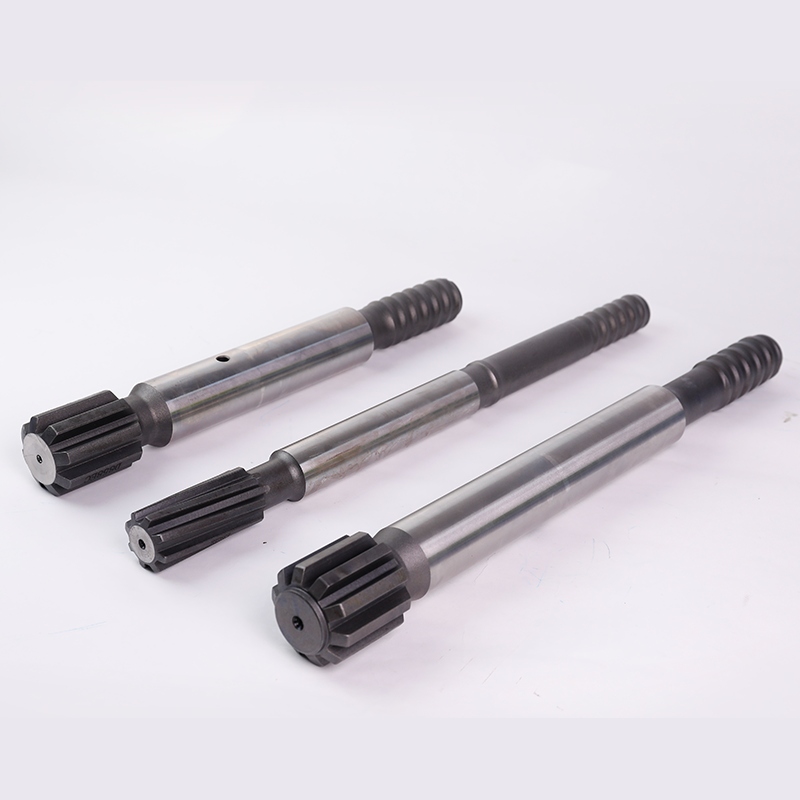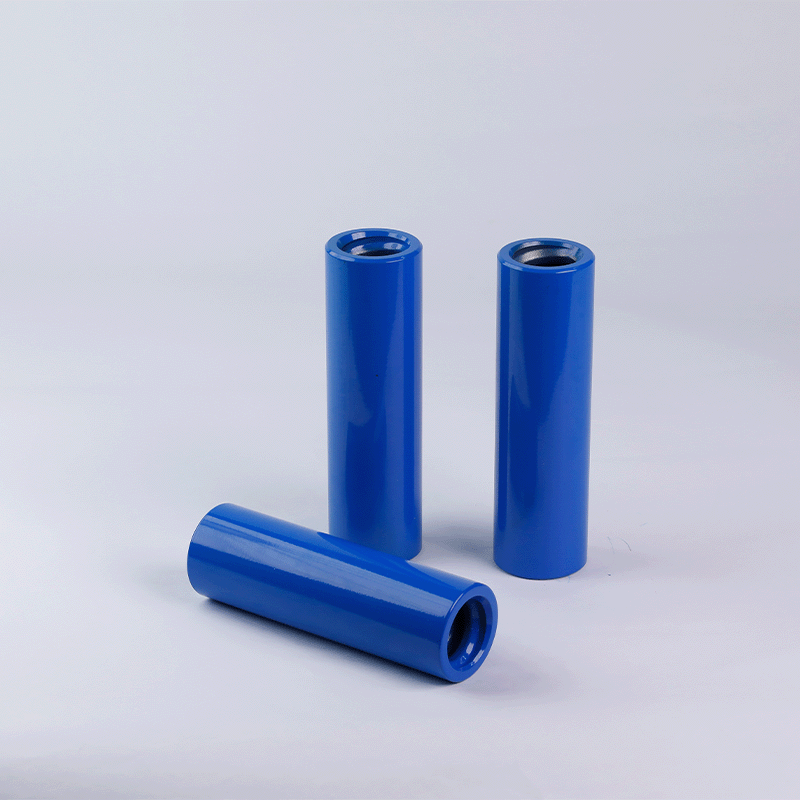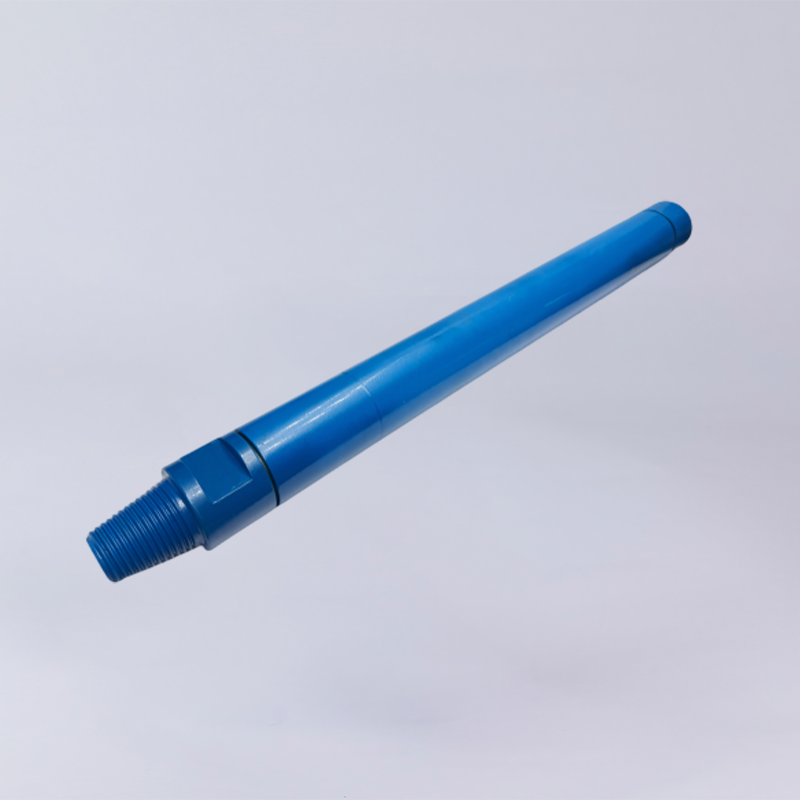The DTH hammer uses compressed air as the circulation medium and driving energy, and drills through the impact-rotation method. This technology breaks through the rock-breaking limitations of traditional air drilling and has become a widely used drilling technology. Its most remarkable advantage is its extremely high drilling efficiency. When operating in hard rock formations, compared with ordinary diamond rotary drilling, the efficiency can be increased several times or even dozens of times.
Thanks to this outstanding advantage, the DTH hammer is widely used in many fields such as mining, tunneling, and hydropower projects. However, precisely because of its wide application scenarios and complex and changeable working environments, it is particularly important to strictly follow the standardized operating procedures and precautions during the actual drilling process. Once the operation is improper, it will not only reduce the drilling efficiency but also may cause tool damage and even serious safety accidents. Next, this article will introduce the precautions for DTH hammer drilling to help achieve efficient and safe operation of the tool.
Checks before Drilling
Check if the air supply pipeline is firmly connected: Carefully check the connection parts of the pipeline, including the interface between the drilling rig and the DTH hammer, to ensure that there are no loose or air-leaking phenomena at each connection. At the same time, check whether the air supply pipeline is damaged, aged, or folded. If it is damaged, it should be replaced in time to avoid insufficient air pressure or gas leakage caused by pipeline problems, which may affect the normal operation of the DTH hammer or even cause safety accidents.
Check if the oil mist device is filled with engine oil: Check the oil level of the oil mist device to ensure that the internal oil level remains within the normal range marked on the oil window. Different models of DTH hammers have specific requirements for the specifications and performance of engine oil. The appropriate lubricating oil should be selected strictly according to the tool manual. In addition, check whether the adjustment knob of the oil mist device is flexible and adjustable, and confirm that the oil mist device can work normally.
Check if the drilling rig is stable: Check whether the installation foundation of the drilling rig is solid and flat, and ensure that the bottom of the drilling rig is in close contact with the ground without shaking. If the drilling rig is not installed stably, it is easy to cause uneven stress on the drilling tool during the drilling process, resulting in problems such as borehole deviation, which will affect the project quality and construction safety.
Check if the piston movement of the DTH hammer is flexible: Check whether there are obvious cracks, deformations, or other damages on the appearance of the DTH hammer. Manually push the piston to check whether its movement is flexible and smooth without blockage. If the piston movement is not flexible, the DTH hammer needs to be further disassembled for detailed inspection and cleaning.
Precautions during Drilling
Strictly control the technical parameters: Before drilling, the drilling technical parameters, including the drilling pressure, rotation speed, and air volume, should be scientifically formulated based on the geological survey report and engineering requirements. During drilling, it is necessary to operate strictly by the established parameters, and it is strictly prohibited to blindly pursue the drilling speed to rush the progress. Blindly increasing the speed may cause the drilling tool to be overloaded, leading to problems such as drill pipe breakage and accelerated rock drill bit wear, and may even cause serious accidents such as drill jamming. The parameters should be adjusted dynamically according to the rock formation characteristics to ensure a safe, stable, and efficient drilling process.
Closely monitor the air pressure changes: The construction personnel should always pay attention to the value of the air pressure gauge and use it as an important basis for judging the drilling conditions. Once a sharp rise in pressure is found, all aspects of the tool and the situation in the hole should be carefully checked to promptly identify the cause and troubleshoot. If the abnormal air pressure is not dealt with promptly, it may also damage key tools such as the DTH hammer, increasing the maintenance cost and the risk of project delays.
Flexible deal with abnormal drilling situations
Handling of drill pipe vibration: During the drilling process, if the drill pipe is found to vibrate violently, it indicates that it is very likely to have encountered a fracture zone, fault, or large fissure. At this time, the drilling tool should be quickly lifted up a certain distance to make the DTH drill bit out of the abnormal area, and then slowly lowered the drilling tool to pass through this area with a lower drilling pressure.
Handling of abnormal air return at the hole mouth: When the phenomenon of no air return at the hole mouth and slow drilling occurs, it indicates that a large crack may have been encountered, causing the compressed air to leak and unable to effectively carry the rock cuttings out completely. At this time, the drilling tool needs to be repeatedly lifted up and down for periodic rock-breaking and hole-blowing work.
Handling of abnormal impact noise: When the DTH hammer is working normally, it will emit regular and clear impact noises. During the drilling process, the construction personnel should always pay attention to the changes in the impact noise. If it is found that the impact frequency becomes lower, and the sound is dull or unstable, it indicates that the DTH hammer may have abnormal situations such as internal part wear, insufficient air pressure, or air path blockage. At this time, the drill must be lifted immediately, and the impactor should be taken out of the hole for a comprehensive inspection and maintenance to avoid the expansion of the fault and affect the service life of the tool.
Conclusion
The above are the precautions for the DTH hammer from before drilling to during the drilling process. Strictly following these points can not only ensure the efficient operation of the tool but also effectively reduce the accident risk. Only by integrating standardized operations into every construction link can the technical advantages of the DTH hammer be fully utilized and lay a solid foundation for safety and quality in various engineering constructions.

